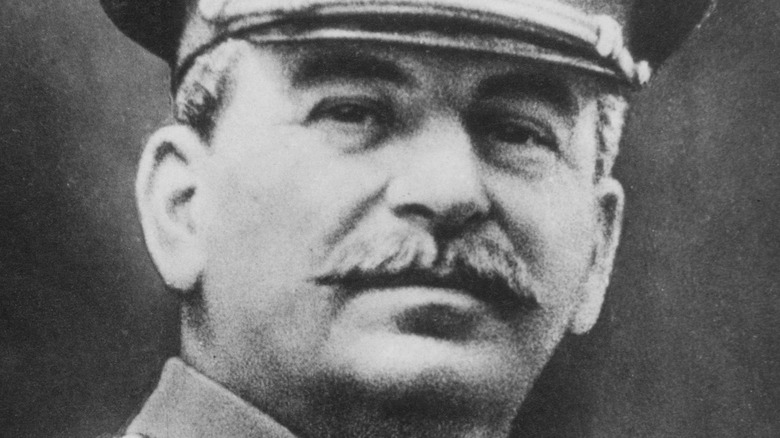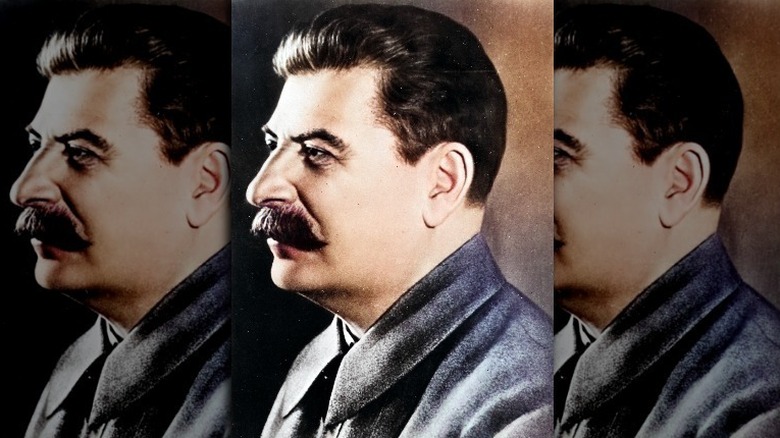Here's How Joseph Stalin Would've Looked In Color
Born into poverty in 1878, Joseph Stalin would become the dictator of the Soviet Union and be remembered for his ruthless reign of terror (via History). Before this, however, he was sent by his devout Orthodox Christian mother to become a priest (via Biography). Instead of reading scripture, he read about Karl Marx and joined a socialist group. And despite his humble beginnings, Stalin later served Vladimir Lenin as the secretary-general of the Central Committee of the Communist Party.
Stalin climbed up the party's ladder and gained control by the time Lenin died in 1924. Thus began his totalitarian regime. Stalin wanted to turn Russia into a superpower via industrialization and took control of farmland that was once given to the peasants by the Bolsheviks. This came with a cost, and famine spread throughout the country, killing millions.
Moreover, Stalin began to execute or exile anyone who he deemed a threat in what is known as the Great Purge (via the University of Washington). Between 1936 and 1938, millions died or were sent to prison camps located in Siberia or the far east. Like other dictators, Stalin also built a cult of personality. Cities were renamed after him, history books were rewritten, and censorship became the norm.
Black and white photos of Stalin are plentiful. But what did the ruthless dictator actually look like in color?
Stalin in color
In the photo above, it's hard to believe one is viewing a cold-hearted being responsible for countless deaths. Stalin looks orderly and calm as he stares into the distance. Interestingly enough, he was said to have been scarred from the smallpox he contracted as a child (via Biography). However, in this particular photo, Stalin seems to be blemish-free. Likewise, his arm was deformed from an accident (something he was apparently bullied for when he was young), so it might be not a coincidence that he is only photographed from the shoulders up.
Stalin died in 1953 after suffering a stroke (via History). His successor, Nikita Khrushchev, condemned his actions and his cult of personality. He also began a de-Stalinization process (via the University of Washington). It's estimated that Stalin was responsible for the deaths of 20 million people. In spite of this, some believe Stalin's actions — no matter how brutal — led the Soviet Union into prominence.

